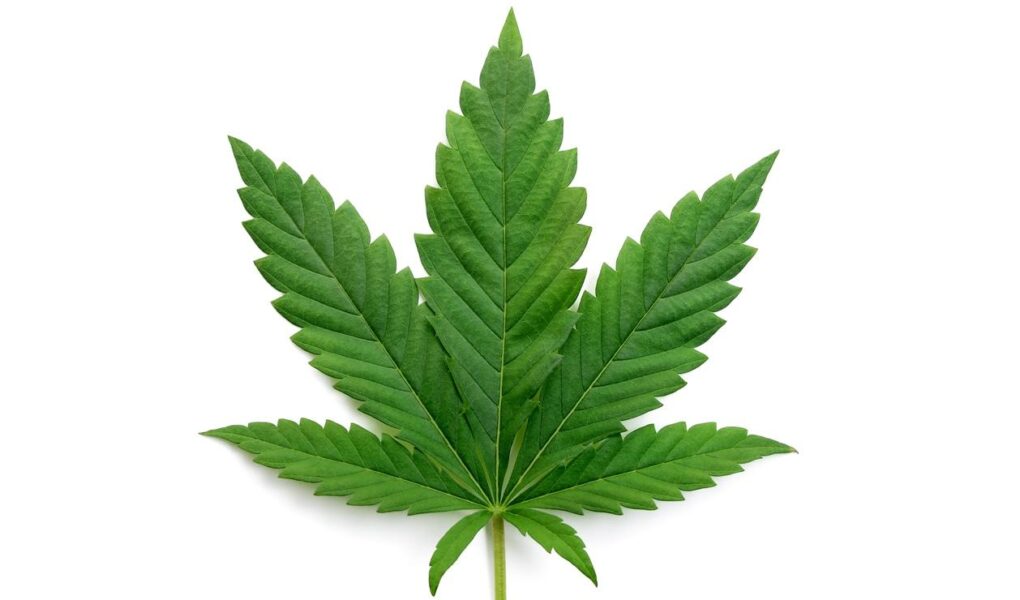Unlocking the Green: Fascinating Facts About Marijuana
As a plant that has sparked lively debates and stirred passionate opinions for centuries, marijuana stands at the intersection of culture, medicine, and science. With its captivating history and evolving legal landscape, it deserves exploration beyond the binaries of stigma and celebration. In this article, we will delve into a variety of intriguing facts about marijuana—shedding light on its botanical characteristics, medicinal properties, and socio-economic impact. Whether you’re a curious newcomer or a seasoned enthusiast, prepare to expand your understanding of this multifaceted herb, as we uncover the truths that lie beneath the layers of smoke and speculation.
Table of Contents
- Understanding the Chemical Makeup of Marijuana
- Exploring the Medical Benefits and Risks
- Navigating Legalization and Regulation Trends
- Best Practices for Safe Consumption and Responsible Use
- Q&A
- To Conclude
Understanding the Chemical Makeup of Marijuana
Marijuana is a complex plant with an intricate chemical composition that contributes to its varied effects and benefits. At the heart of its unique profile are numerous cannabinoids, which are chemical compounds that interact with the body’s endocannabinoid system. The most well-known cannabinoid is tetrahydrocannabinol (THC), which is primarily responsible for the psychoactive effects commonly associated with marijuana. Another significant cannabinoid is cannabidiol (CBD), celebrated for its potential therapeutic benefits without the high. Understanding these cannabinoids aids in grasping why marijuana can elicit different moods, sensations, and medical advantages.
In addition to cannabinoids, marijuana contains a plethora of terpenes—aromatic oils that not only give the plant its characteristic scents and flavors but also influence how cannabinoids are absorbed and perceived by the human body. Some of the most prevalent terpenes include:
- Myrcene: Earthy and musky, it may promote relaxation.
- Limonene: Citrusy and refreshing, often linked to elevated mood.
- Pinene: Piney and sharp, potentially aids in alertness.
This combination of cannabinoids and terpenes creates what is known as the “entourage effect,” enhancing the potential benefits of marijuana when both categories work in unison. To visualize the diversity of these components, a simple table showcases selected cannabinoids and their characteristics:
| Cannabinoid | Type | Primary Effect |
|---|---|---|
| THC | Psychoactive | Intoxication, Euphoria |
| CBD | Non-Psychoactive | Relaxation, Anti-Inflammation |
| CBG | Non-Psychoactive | Anti-bacterial, Neuroprotective |
Exploring the Medical Benefits and Risks
Marijuana has garnered significant attention for its potential health benefits, which have encouraged a growing number of states to legalize its use for medicinal purposes. Research has indicated that components of marijuana, particularly cannabinoids such as THC and CBD, may help alleviate various ailments, including:
- Chronic Pain: Many patients report reduced pain levels associated with conditions like arthritis or neuropathy.
- Anxiety and Depression: Some studies suggest that marijuana may help manage symptoms of mental health disorders.
- Appetite Stimulation: Useful for patients undergoing chemotherapy, as it can counteract nausea and increase food intake.
- Sleep Disorders: Certain strains may promote better sleep patterns and help alleviate insomnia.
Despite these potential benefits, the use of marijuana is not without risks. The psychoactive effects of THC can lead to impaired cognitive function and increased anxiety in some individuals. Furthermore, long-term use may result in dependence or contribute to respiratory issues when smoked. The following table outlines some of the more common side effects and considerations:
| Side Effect | Considerations |
|---|---|
| Impaired Coordination | Risk of accidents or injuries, particularly while driving. |
| Memory Issues | Can affect short-term memory and cognitive abilities. |
| Increased Heart Rate | May affect individuals with pre-existing heart conditions. |
| Withdrawal Symptoms | Some users may experience withdrawal when ceasing use. |
Navigating Legalization and Regulation Trends
As attitudes toward marijuana shift, various regions are grappling with legalization and regulation trends that shape its use and availability. Governments across the globe are introducing legislation that reflects changing public perceptions, often influenced by factors such as economic potential and demands for personal freedom. Regulatory frameworks are adapting to address issues of safety, quality, and distribution. Some key considerations include:
- Taxation Models: Different states and countries implement diverse tax structures on marijuana sales, affecting pricing and revenue.
- Age Restrictions: Establishing a legal age for consumption is essential to prevent access among minors.
- Distribution Channels: Regulations dictate whether marijuana can be sold in traditional stores, dispensaries, or through online platforms.
- Public Consumption Regulations: Laws vary widely concerning where and how marijuana can be consumed publicly.
In addition to the regulatory landscape, understanding the socio-economic impact of these changes is crucial. Legalization efforts are often accompanied by discussions around health impacts, economic opportunity, and social justice. Below is a simple overview of potential benefits and challenges associated with legalization:
| Benefits | Challenges |
|---|---|
| Increased tax revenue | Risk of misuse or overconsumption |
| Job creation in the cannabis industry | Regulatory costs and complexities |
| Reduction in criminal justice costs | Public health concerns and education needs |
Best Practices for Safe Consumption and Responsible Use
When considering marijuana consumption, it’s essential to prioritize your safety and well-being. Start by understanding your local laws regarding marijuana use, as regulations vary widely across different regions. Choose a reliable source for your product to ensure quality and potency, as contaminated or mislabeled products can lead to adverse effects. Here are some key practices for safe consumption:
- Start low and go slow: Begin with a small dose, especially if you are new to marijuana.
- Stay hydrated: Keep water on hand to alleviate any potential dry mouth and stay hydrated.
- Know your strain: Different strains can have varying effects, so research them before consuming.
- Avoid mixing: Refrain from combining marijuana with alcohol or other substances to prevent unpredictable reactions.
In addition to safe consumption, practicing responsible use contributes to a healthier experience and social environment. Establish a comfortable setting for consumption; this can enhance the experience and provide a sense of safety. Communicate openly with those you are consuming with to ensure everyone is on the same page. Consider the following responsible use tips:
- Be mindful of your surroundings: Stay in a safe and familiar environment, especially if you’re a novice user.
- Respect others’ choices: Not everyone might be in the same frame of mind, so be considerate of non-consumers.
- Plan for transportation: Arrange for a designated driver or alternative transportation if you plan to go somewhere after consuming.
- Educate yourself: Stay informed about the effects, benefits, and potential risks of marijuana.
Q&A
Q&A: Facts on Marijuana
Q1: What exactly is marijuana?
A1: Marijuana, also known as cannabis, is a flowering plant that has been used for thousands of years for various purposes, including medicinal, recreational, and industrial applications. It contains chemical compounds called cannabinoids, with THC (tetrahydrocannabinol) being the most well-known for its psychoactive effects.
Q2: Is marijuana legal everywhere?
A2: Not at all! The legality of marijuana varies greatly around the world. Some countries have fully legalized it for recreational and medicinal use, while others permit only medicinal use, and many still classify it as illegal. In the U.S., for example, some states have legalized it, while others enforce strict penalties.
Q3: What are the potential health benefits of marijuana?
A3: Research suggests that marijuana can help alleviate symptoms of various conditions, such as chronic pain, nausea from chemotherapy, epilepsy, and multiple sclerosis. Specific cannabinoids, like CBD (cannabidiol), have gained attention for their potential therapeutic effects without the psychoactive properties associated with THC.
Q4: Are there risks associated with marijuana use?
A4: Yes, there are potential risks. Marijuana use, particularly in high doses or at a young age, can lead to issues such as impaired cognitive function, addiction, and mental health problems like anxiety and depression. It’s important to consider these factors and consult with a healthcare professional if needed.
Q5: How is marijuana typically consumed?
A5: Marijuana can be consumed in various ways, including smoking dried flowers, vaping oils, or edibles like gummies and baked goods. Each consumption method can deliver different effects and onset times, influencing the user’s experience.
Q6: Can marijuana use impair driving?
A6: Yes, marijuana can impair motor skills, reaction times, and judgment, which significantly increases the risk of accidents. As with any substance that alters perception and coordination, it’s advisable to avoid driving or operating heavy machinery after consumption.
Q7: How does marijuana affect mental health?
A7: Marijuana’s impact on mental health can be complex. While some users report relief from anxiety and depression, others may experience exacerbated symptoms. Long-term use, especially beginning in adolescence, is linked to an increased risk of developing mental health issues, particularly in individuals with a predisposition to them.
Q8: What is the current state of marijuana research?
A8: Marijuana research is expanding rapidly, yet regulatory challenges often limit the scope of studies. While there’s a growing body of evidence supporting its medicinal properties, more extensive clinical trials are needed to fully understand its long-term effects, optimal dosages, and potential applications.
Q9: How does marijuana use affect society?
A9: The social impact of marijuana legalization is a hot topic. Supporters argue it can reduce criminal activity, generate tax revenue, and improve public health through regulated use. Critics raise concerns about increased usage rates, especially among youth, and the challenges of regulating a newly legal market.
Q10: What should I consider before using marijuana?
A10: If you’re contemplating marijuana use, consider your personal health history, the legal implications in your area, and potential effects on your mental and physical well-being. Open discussions with a healthcare provider can help you make an informed choice tailored to your circumstances.
Whether you’re a seasoned user or merely curious, understanding the multifaceted nature of marijuana can help you navigate its complexities in today’s evolving landscape.
To Conclude
As we wrap up our exploration of marijuana, it’s clear that this complex plant holds a wealth of information, shaped by history, culture, and evolving scientific understanding. Whether viewed through the lens of medical research, socio-economic implications, or legal debates, the facts surrounding marijuana invite us to consider its multifaceted nature. With ongoing studies and changing legislation, the narrative continues to evolve, urging us to stay informed and open-minded. As we navigate the shifting landscape of cannabis, let these facts serve not only as knowledge but also as a stepping stone toward informed discussions and decisions. Ultimately, understanding marijuana’s place in our society will require curiosity, dialogue, and a commitment to evidence-based insights. The journey may not be over, but the path is illuminated by the facts we’ve uncovered together.



